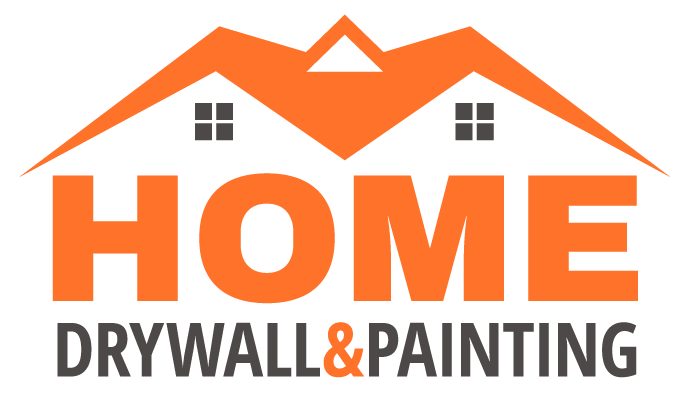 Drywall is the most common material in interior walls, but it’s not perfect. To understand what to do when drywall starts to show signs of wear, you have to understand how it works and what can go wrong with it before hiring a trusted contractor. Drywall is essentially gypsum plaster sandwiched between two sheets of paper, which are then covered with another layer of gypsum plaster. That makes it incredibly easy to install—just cut out the shape you need and nail or screw it into place—but also prone to small cracks and holes if something goes wrong during drywall installation or repair work. Here are what those problems might look like: Drywall Repairs in Lakewood CO
Drywall is the most common material in interior walls, but it’s not perfect. To understand what to do when drywall starts to show signs of wear, you have to understand how it works and what can go wrong with it before hiring a trusted contractor. Drywall is essentially gypsum plaster sandwiched between two sheets of paper, which are then covered with another layer of gypsum plaster. That makes it incredibly easy to install—just cut out the shape you need and nail or screw it into place—but also prone to small cracks and holes if something goes wrong during drywall installation or repair work. Here are what those problems might look like: Drywall Repairs in Lakewood CO
Holes and Cracks in Drywall
Cracks that run across the corner or midway between corners and switch plates are another sign that you may have drywall damage. These cracks can be repaired by replacing the drywall, but it’s best if they’re caught early on so they don’t spread. The same goes for holes in your ceiling or flooring, which can be fixed by patching up the damaged area with new drywall installation. If this happens to you, make sure you fix it before more damage occurs!
If you find a hole or crack in your drywall, the first thing to do is make sure it’s not a problem with wiring or plumbing. If that’s the case, call your local contractor.
Once you’ve verified that the damage isn’t electrical or related to other infrastructure concerns, here are some tips for patching up holes and cracks in your drywall:
- Holes: You can use spackle (a filler) to cover small holes and cracks. Use a putty knife or sponge painter’s tool to smooth over the spackled area after applying it with a trowel. This will ensure smoothness and an even finish.
- Cracks: To fix larger cracks, take an old credit card or gift card (the one you don’t care about) and fold it into quarters so that it fits into the crack like a wedge. Then hammer on either side of where you inserted your card until it expands outwards slightly; this will close up some of those gaps on either side of whatever caused them!
Sagging Ceilings and Flooring
If you’ve got a sagging ceiling or floor, we’re here with answers. If you have a sagging ceiling, there are two main causes—too much weight on the top of your home and/or poor ventilation. If your home has a lot of moisture in the air, such as during humid months or near a pool or lake, this can cause water damage to drywall over time. When the drywall becomes too moistened by damp air getting trapped underneath it, it can start to sag from its weight! The same goes for homes that have no ventilation system whatsoever. The longer hours spent breathing stale indoor air will eventually lead to structural failure within walls made of gypsum board products like sheetrock.
If you’ve got someone handy at home who knows what they’re doing when it comes to construction work, then fixing this problem yourself might be an option worth considering! It’s not too difficult if all goes well but remember that these are dangerous activities that may require professional assistance if anything goes wrong so proceed with caution!
No one must attempt any kind of repair work on their own unless necessary because there could be severe consequences involved in mishandling materials like these which might result in bodily injury while attempting repairs yourself. If you’re unsure about repairing your drywall, it’s best to leave the job up to your trusted local contractor.
Rotten Wood Around Window Frames
Rotten wood around window frames is another sign that you need to repair your drywall. This can be a bit tricky because there are two types of rotten wood: soft and spongy, or hard and brittle. If the wood is soft and spongy, you can easily pry it out with a screwdriver. However, if the wood is hard and brittle, you will need to drill through it first before prying out any rotten pieces that are inside your wall.
If you’re not sure whether or not there is any rotten wood in your walls yet but are concerned about its presence going forward, check for dark patches or spots that are starting to soften. This may indicate areas where mold has begun growing behind the drywall surface itself.
What to Do About It
If you have a damaged wall, call a professional contractor to repair it. If you don’t want to pay for repairs, there are some things you can do yourself but it’s best to get an expert opinion if you’re unsure.
Damaged drywall causes problems for homeowners and renters alike because it indicates that something has gone wrong with your home’s structure. This can range from minor damage like holes in the wall to more serious issues like mold and mildew growth caused by dampness (which may also be problematic in itself).
Drywall Repairs in Lakewood CO
If you notice any of the above signs, it’s important to have your drywall inspected by a professional contractor immediately. The longer you wait, the more likely it is that damage will spread and become even more expensive to fix. Contact our team of contractors at Home Drywall and Painting in Lakewood, Colorado for drywall repairs today!
